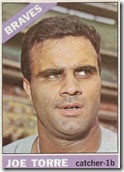As I’m getting along in my 1966 replay (ok, I’m not THAT far), I thought I’d start entering in statistics. Mostly so I can get the process in place. I’ll probably do a longer article about that process later but there were a couple broader questions that came up as I even started thinking about this that are worth bringing up.
A couple caveats before I get started. There’s no one way to do this. I’ve had people email me and ask me what stats to keep for a replay or should they do transactions for their project, etc. I can’t emphasize this enough: IT’S YOUR REPLAY: do it however you feel most comfortable and within the scope of your time frame and means. That’s the beauty of tabletop APBA. It’s incredibly customizable and you can really make it yours. We used to have a manager in our league that would manually keep all fielding stats (errors, putouts, assists) that weren’t required by the league. He had the time and motivation so we weren’t about to stop him. So if you want to keep track of balks in your replay, do it. Don’t let anyone tell you different.
That said, it’s nice to get other’s input. That’s why I talked to my buddy, Chuck. I asked him a few questions about what stats he kept. Not so much that I HAD to do it his way but like I told him, it gave me a good point of reference. Fortunately, his thinking and mine were similar.
1. Do I record individual pitcher’s hitting stats?
In our league, we just lump all pitchers into one category of “Pitchers’ Batting”. But maybe I’d like to see how Tony Cloninger or Ray Sadecki are hitting? The downside is you’ll have tons of no-stick relievers with just a couple of at-bats. Weigh the upside vs downside.
Verdict: Yes, I will. Too important to have all of the stats for me.
2. Do I record all of the secondary fielding positions played?
 Take 1966 Joe Torre, for example. He played 114 at catcher and 36 at first base. Am I going to record the number of games at first played by Torre (who by the way is reported to have played APBA and at left, seems to be saying, “Yo, you better frickin’ be recording my games at first.”) in my replay?
Take 1966 Joe Torre, for example. He played 114 at catcher and 36 at first base. Am I going to record the number of games at first played by Torre (who by the way is reported to have played APBA and at left, seems to be saying, “Yo, you better frickin’ be recording my games at first.”) in my replay?
For one reason or another, I find secondary positions difficult to keep despite their perceived importance. It just doesn’t fit in my spreadsheet schema.
Verdict: Up in the air. I’m recording them on the scoresheets and we’ll see.
3. Do I keep fielding errors?
As many times I roll a 53-20 and Bill Mazeroski makes an error, will I keep track of those errors throughout the season?
Verdict: This one is easy. I love APBA but I have to admit that their fielding system is a bit flawed. I’m not wasting time keeping errors.
Thoughts? Do others have different ways of approaching these issues? Do other questions come up?




I have the same problem in my 1916 replay as to whether to include sacrifice flies (which weren’t a statistic yet), but which my BallScore/BallStat program allows me to do). I chose to do that but not saves and holds, which of course hadn’t been invented yet.
Frankly, BallScore is worth $19.99.
Passed Balls is one stat I always waffle on. Outfield assists, too. I like having these stats at the end of the season, but I often forget to record them at the time the game is played. So even though I track them at the end of the season, I’m not always convinced that I have them 100% correct.
I second (again) Ballscore/Ballstat. It’s a horribly, frighteningly, bewilderingly unintuitive program with an intimidating learning curve. But it will eventually wrestle you to the ground and force you to submit to its ways (took me about a dozen practice games and two or three practice “leagues” to really get a hang of it), and then it’s a marvelous tool. I can keep with pen and paper a detailed batter-by-batter, inning-by-inning score sheet, complete with comments and notes, and have it all keyed into Ballscore in a couple of minutes. Other than actual card sets, there isn’t a better $20 to be spent in this hobby.
On pitchers hitting, I think there’s a compromise: Keep bat stats for only pitchers with X or more plate appearances in real life (say 40), lump the rest in with one pile. But I prefer to side with lumping them all in; pitchers are selected for pitching, not hitting, so save the odd Hampton/Zambrano/etc their hitting stats tell you nothing about how valuable they are, and their low AB totals tell you nothing about whether APBA has them rated right. For that matter, I sometimes waver on whether the gameco’s insistence on putting individualized hitter’s cards for each pitcher is a charming quirk of this wonderful game or an eye-rollingly irritating anachronism.
Wow, you’re like the 3rd person to endorse Ballscore. I’ll have to check them out.
Two stats I do not bother keeping:
1) Errors…We all know APBA’s deficiencies in this area.
2) Hits given up by pitchers. Probably C pitchers are fairly close to reality, but everyone else is pretty far from the norm, so why keep a stat that is embarrassingly way out of kilter?